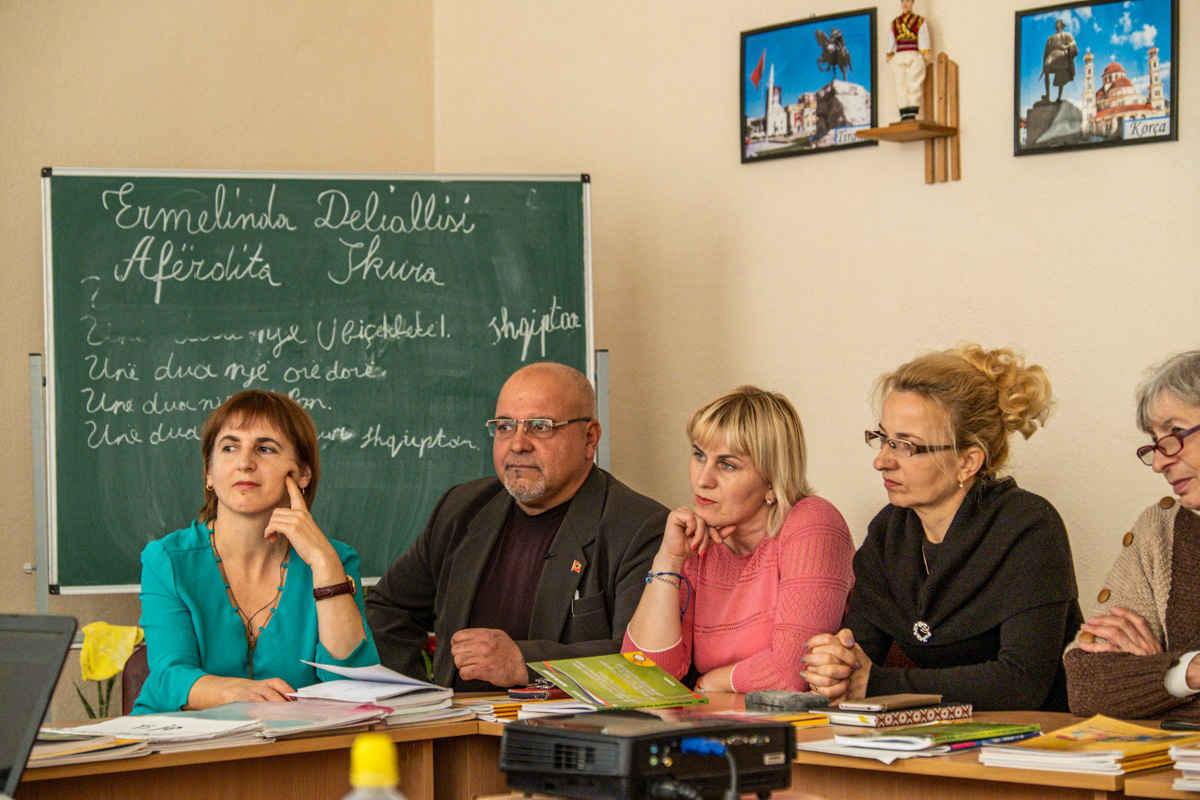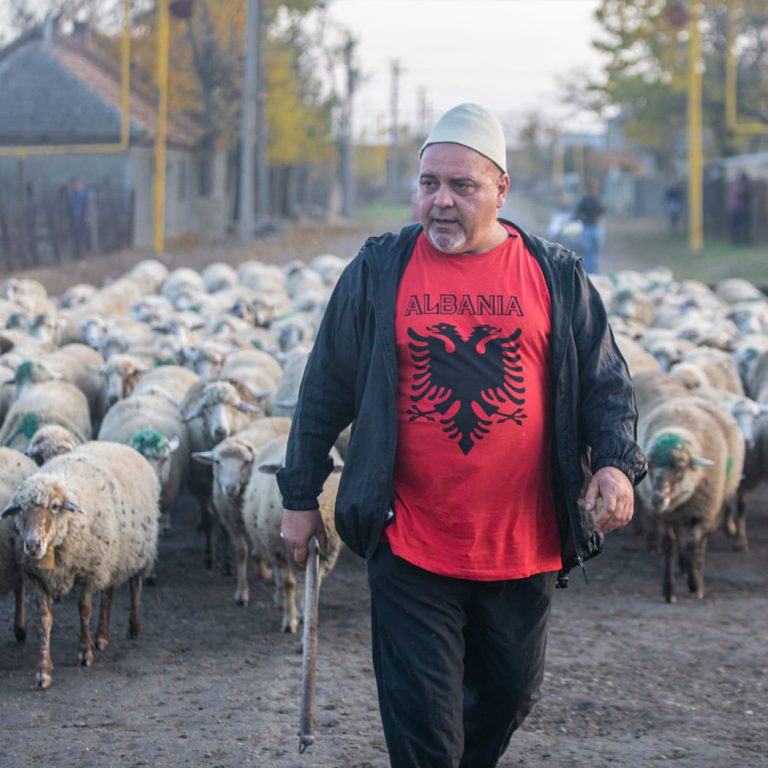The Albanian community has been living on the territory of Ukraine since the late 18th – early 19th centuries. The Orthodox Albanians had first migrated to Bulgaria, then together with the Gagauzes and Bulgarians, trying to escape the oppression of the Ottoman Empire which prevailed in the Balkans, came to the land of modern Bessarabia and the Black Sea, where they settled: partly in Odesa, mostly in rural areas. Half a century later, some of the Balkan colonists migrated to the Azov Sea, where they also established several villages where their descendants live till today.
Since most of Bessarabia’s villages are multinational (where Bulgarians, Albanians, Gagauzes, Moldovans, Romanians, Ukrainians and other nationalities live shoulder-to-shoulder), holidays are often joint. For example, Albanians along with the Bulgarians celebrate Trifon Zarezan – the holiday dedicated to pruning vine.
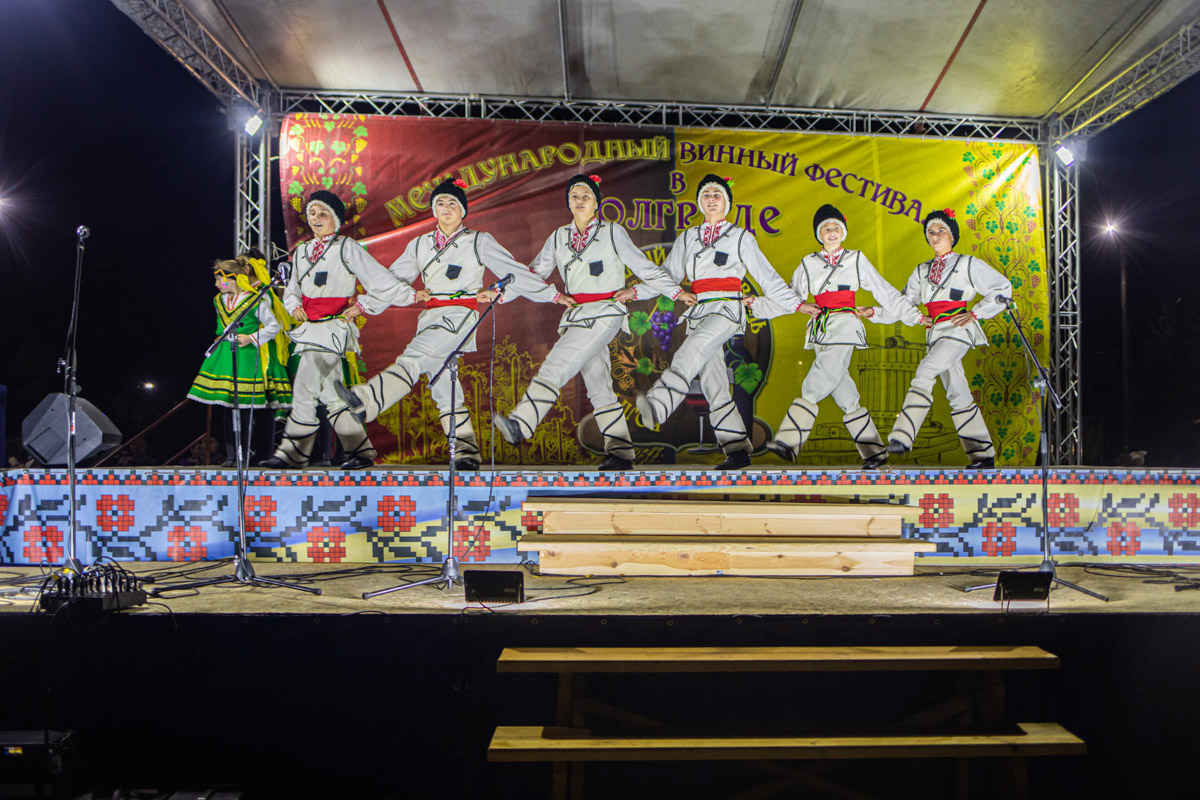
For five years now, the international wine festival Bolgrad Wine Fest has been taking place in Bolgrad in autumn, bringing together not only residents of nearby towns and villages, but also winemakers from all over Ukraine, Bulgaria and Moldova. The festival also features Albanian creative collectives.
Annually on May 6, Albanians of Bessarabia commemorate the birthday of the national hero of Albania, Gjergj Skanderbeg (Alb. Skënderbeu). The interesting fact is that on the same day local Gagauzes celebrate the Orthodox version of the holiday Kurban Bayram — St. George’s Day. Therefore, both Albanians and Gagauzes cook kurban — a dish made from the meat of lamb — on this day, and then all the neighbors come together and celebrate.
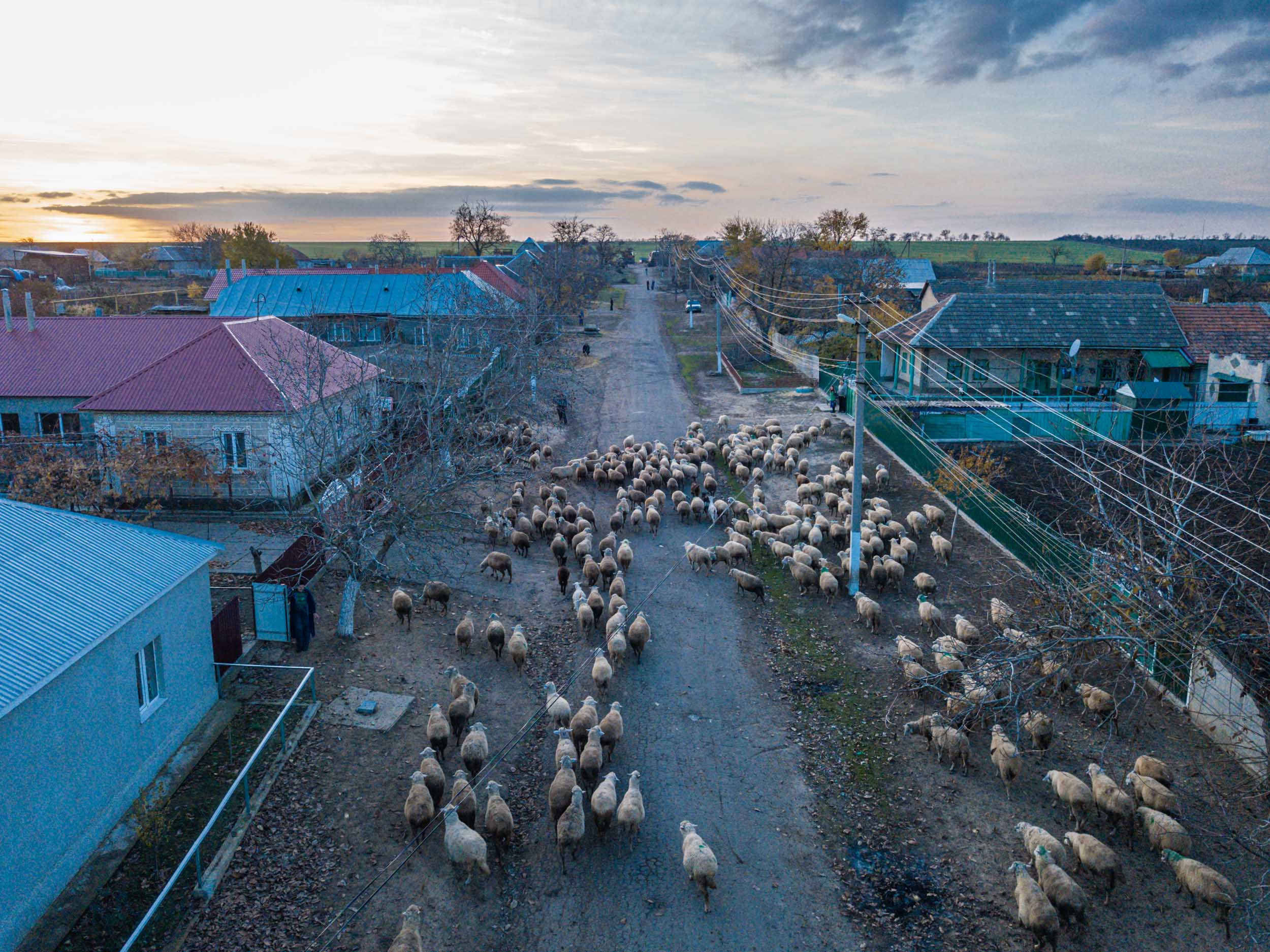
Caracurt
Caracurt village (Alb. Karakurti) is located near Bolgrad in Bessarabia. During Soviet times, it was renamed to another Zhovtneve, and it had that name until 2016 when in the process of decommunization, the village was returned its historical name. The word “caracurt” has a Turkic origin and literally means “black horror” (Turkic “qara” stands for black, “qurt” means horror — tr.). That’s the name of one of the species of poisonous spiders. Probably the mystery will never be solved: why Albanian, Bulgarian, and Gagauzian colonists decided to give such a name to the village they established here in the year 1811.
Nowadays in Caracurt can be heard five languages: Albanian, Bulgarian, Gagauz, Ukrainian and Russian. Local people say that when three people of different nationalities meet in the village and one of them has Albanian as a native language, then all three of them switch to Albanian because it is the main language of international communication here.
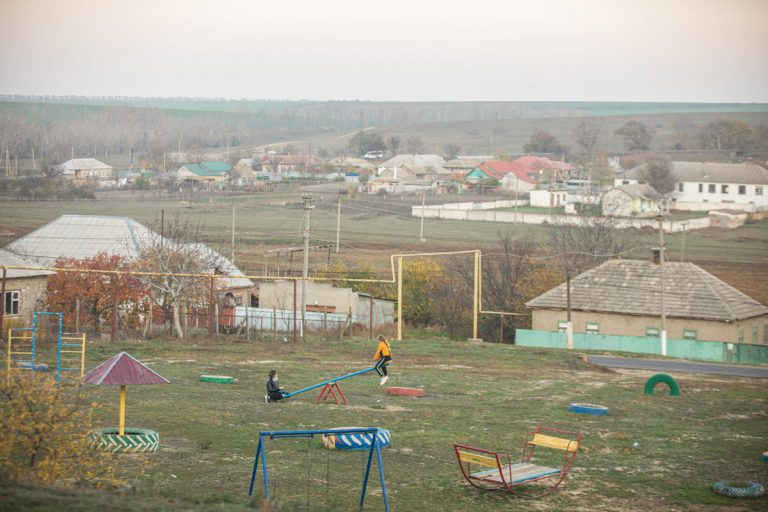
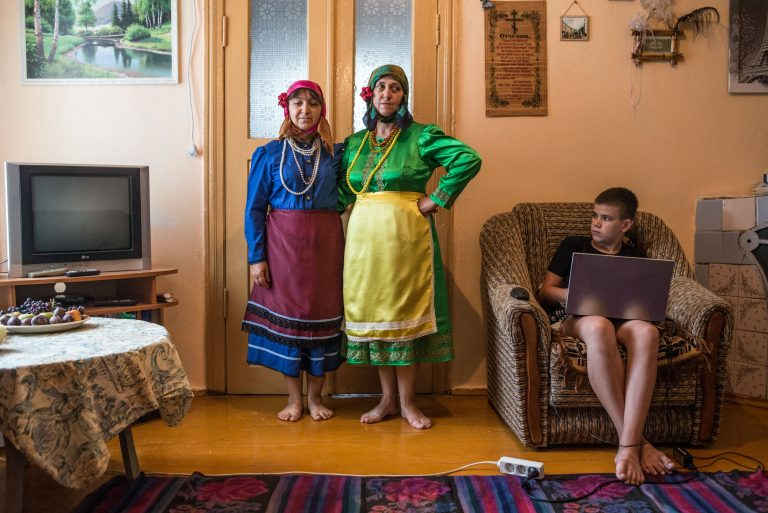
slideshow
According to the census, in 2001 Caracurt was home to up to 3,000 people, of whom 1,725 are Albanians, meaning those who recognize themselves as Albanians and speak Albanian.
In the 1860s, some Albanians from Bessarabia moved to the northern part of Pryazovia, establishing three settlements there: Tyuushki (modern Heorhiivka), Jandran (modern Hamivka) and Taz (modern Divnynske), which still exist. The number of inhabitants of these villages is much smaller than the population of Caracurt. Still, even there are functioning small local museums of local history, which store single artifacts of Albanian culture that were collected by local enthusiasts of the villages.
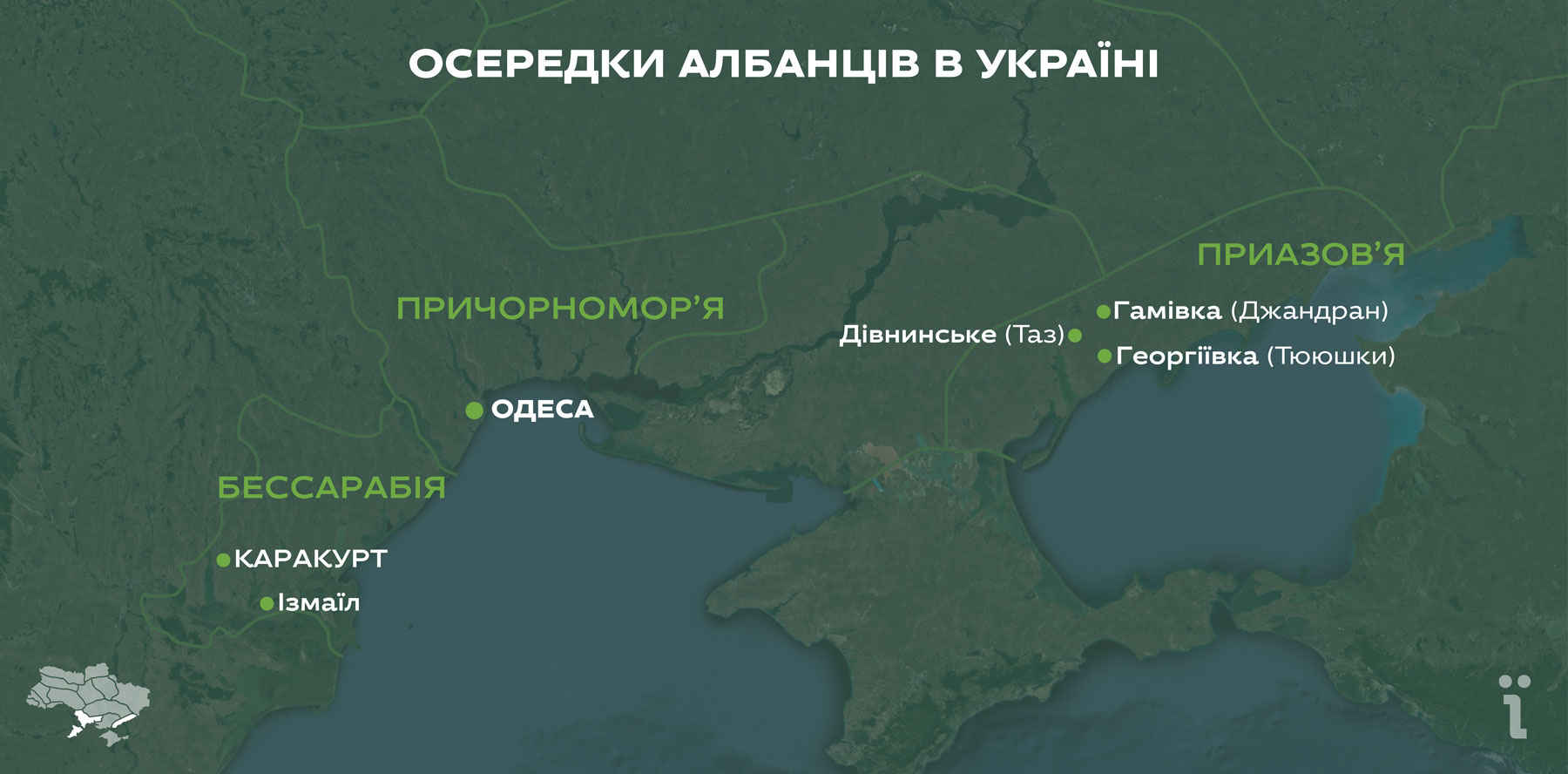
Albanians in Ukraine
In the 16th century a part of the orthodox Albanians — Tosks (there are two main dialects in the Albanian language: Tosk Albanian (southern) and Gheg (northern); respectively, there are two linguistic groups of Albanians: Tosks and Ghegs) migrated to Eastern Bulgaria, which at that time belonged to Ottoman Empire. For three centuries Albanians lived there among Bulgarians and Gagauzes.
Tosk Albanians migrated to the territory of modern Ukraine in the middle of the 18th century, when these lands were under Russian Empire. At that time, most of the colonists consisted of Albanian volunteers who had served in Russian Navy during the Russo-Turkish War. They controlled the Danube Delta, and after the war had ended, settled in and around Odesa. There are two well-known Albanian-related streets in the historic center of Odesa – Mala Arnautska and Velyka Arnautska. As in the 19th century Orthodox Albanians were called the “Arnauts” by Turks.
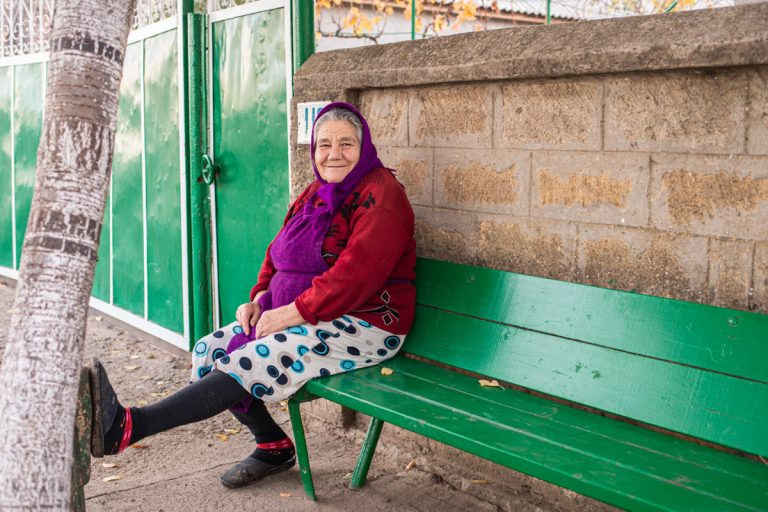
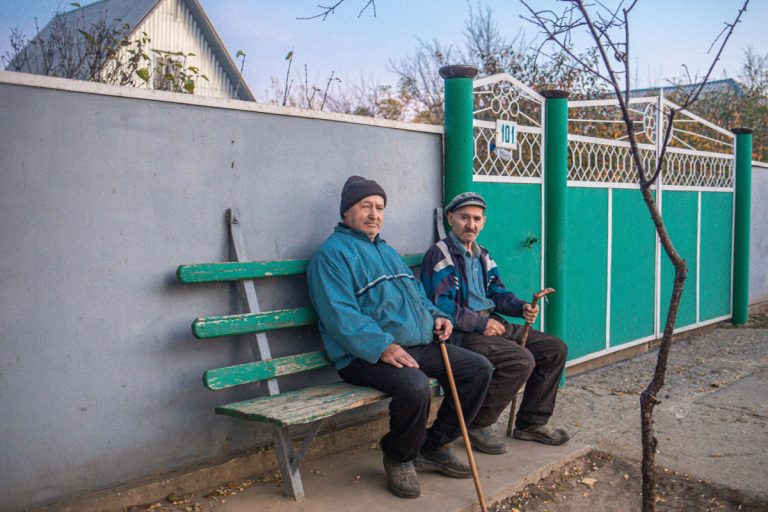
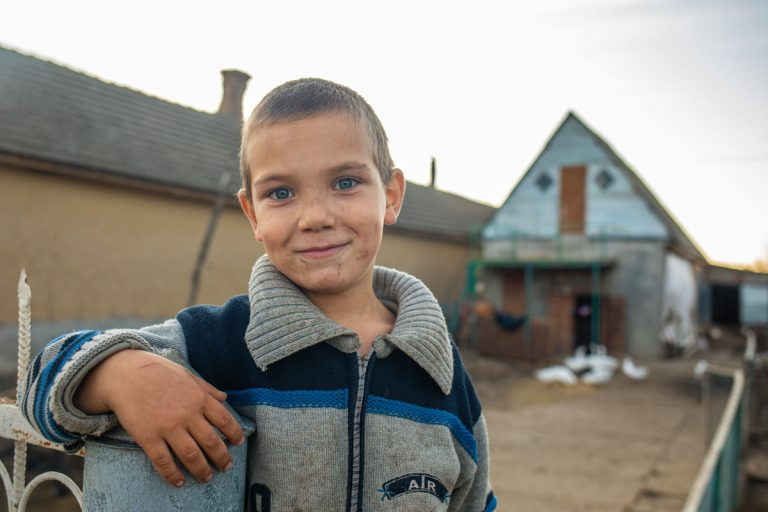
slideshow
One of the causes of the resettlement of Albanians during the years 1806 –1812 to Bessarabia was the intensification of national and religious oppression in their native Balkans, which was then under the rule of the Ottoman Empire.
Several thousand Orthodox Albanian families rejected the prospect of conversion to Islam and went searching for a new homeland. Moreover, the lack of vacant land also caused the resettlement wave. There was a lot of uninhabited land in Bessarabia and Pryazovia at that time.
According to various sources, the modern community of Ukrainian Albanians has between 5,000 and 10,000 people, while less than half of them speak the Albanian language. In addition to villages in Bessarabia and Pryazovia, Albanians also live in such big cities as Odesa, Izmail, Donetsk, Luhansk, Kyiv, Kharkiv, Lviv, etc.
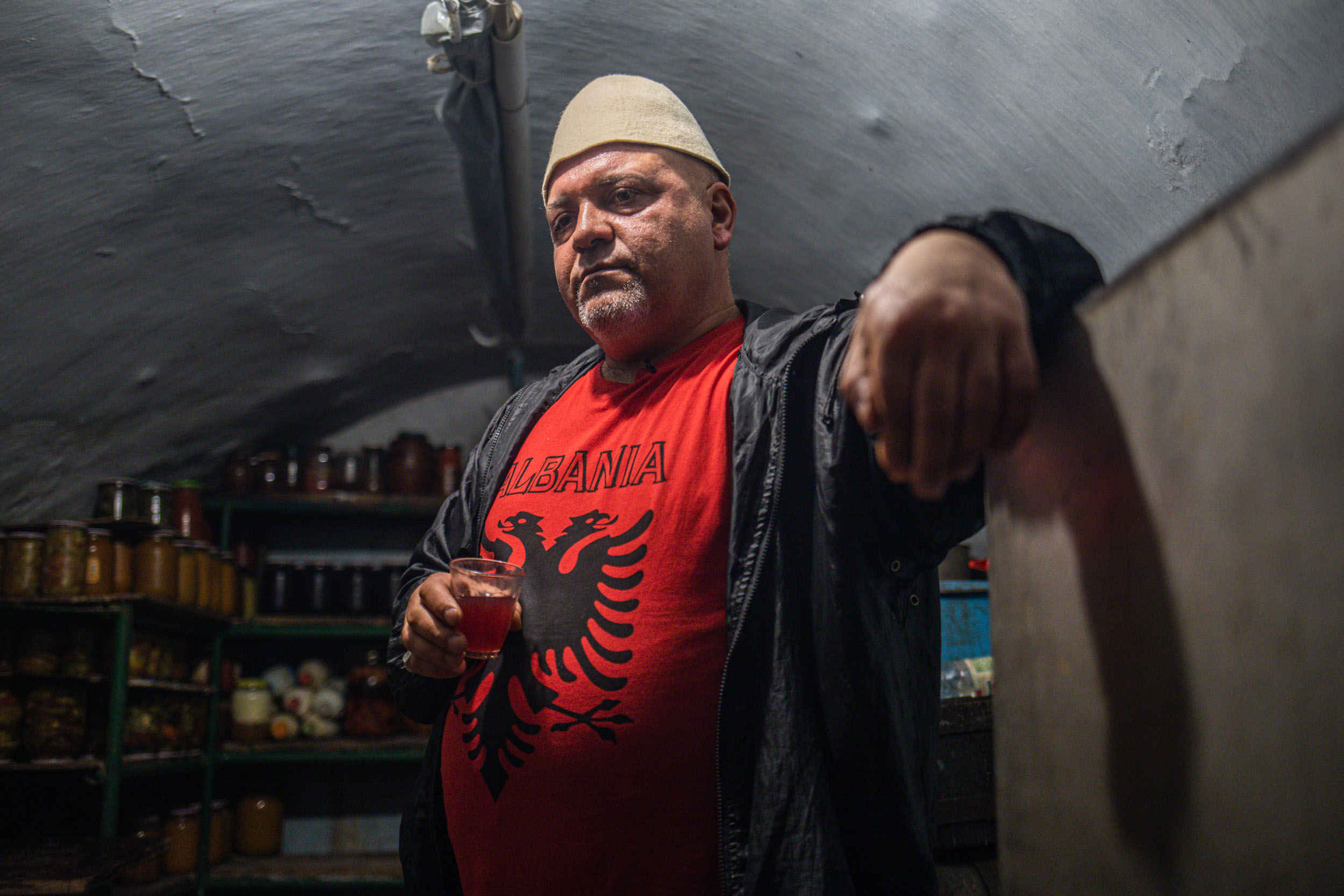
Rodion. The language and community
The first Albanian organization in Ukraine was the Association of Albanians of Odesa, which was established in 1993, but does not exist nowadays. This association was the root of the local Albanian community’s institutionalizing and active revitalizing. Several organizations have emerged in Bessarabia over time, such as the Albanian Cultural and Educational Association “Rilindia” (Rebirth) and the Caracurt Center for Albanian Culture, which was opened in 2016. Albanian institutions have also emerged in Odesa and Izmail. At present, the Albanian Cultural and Educational Society “Dardania” is operating in the Pryazovia region.
The head of Association “Rilindia”, an Albanian, Rodion Pandar, was born in Caracurt, graduated from a local school, after that – from the university in Odesa. He had lived and worked in Istanbul and Odesa for several years, but eventually returned to his native Bessarabia:
– According to Albanian tradition, the youngest son (and I am the only son in the family, I have a sister though) should stay at home where he was born. That’s because he is the heir. So after I worked in Istanbul (from 1994 to 1996), my parents said to me, “Son, are you thinking of returning to your homeland?” I said, “Father, but I have such a well-doing business in Turkey!” And he replied, “If you are an Albanian, come home [laughs].” And I returned.
Rodion says that multilingualism in Caracurt and other Bessarabian villages is a common phenomenon. However, the Ukrainian language has begun to be studied not so long ago. Even after 1991 teaching process in local schools was conducted in Russian for a long time:
– Our village is more than 200 years old. Today everything is mixed up, and there is no difference who you are. Most of the village’s people use three languages. We now speak the state language as well, and we did not have any Ukrainian schools before. I had to learn Ukrainian myself.
